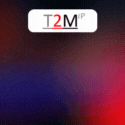|
|
|
 www.design-reuse-china.com
www.design-reuse-china.com |
|

RF design in the 21st century
By Paul Dillien, EEtimes, Aug. 04, 2016 –
It is striking that logic design methodologies have made huge advances in higher levels of abstraction, tool support, and productivity, while RF design has made comparatively slow progress - until now. I recently discovered a couple of new highly integrated and fully programmable wireless transceivers, and was struck by the similarities between these wireless solutions and FPGAs. Viewed from 30,000 feet, both product types are field programmable, highly flexible, and can be used in a wide range of applications. The highly integrated wireless products are sometimes classified as field programmable radio frequency (FPRF) devices, which is the term I'll use from now on. To better understand the impact of FPRF chips, let's consider how a typical project might run today. The building blocks of a wireless receiver would be generic with a low noise amplifier (LNA), followed by some filtering. The RF might then be mixed in a tunable superheterodyne (superhet) stage to convert it to an intermediate frequency (IF) followed by a further mixer stage to translate to baseband. Alternatively, direct conversion, also known as zero-IF, is possible using modern semiconductor technology and astute design techniques. The baseband signal would be amplified and filtered, prior to conversion to in-phase and quadrature (I&Q) digital bit streams. The transmit path converts I&Q data streams to analogue signals via DACs, followed by filtering and amplification before being mixed to modulate the RF carrier and on to an RF amplifier.



 Back
Back